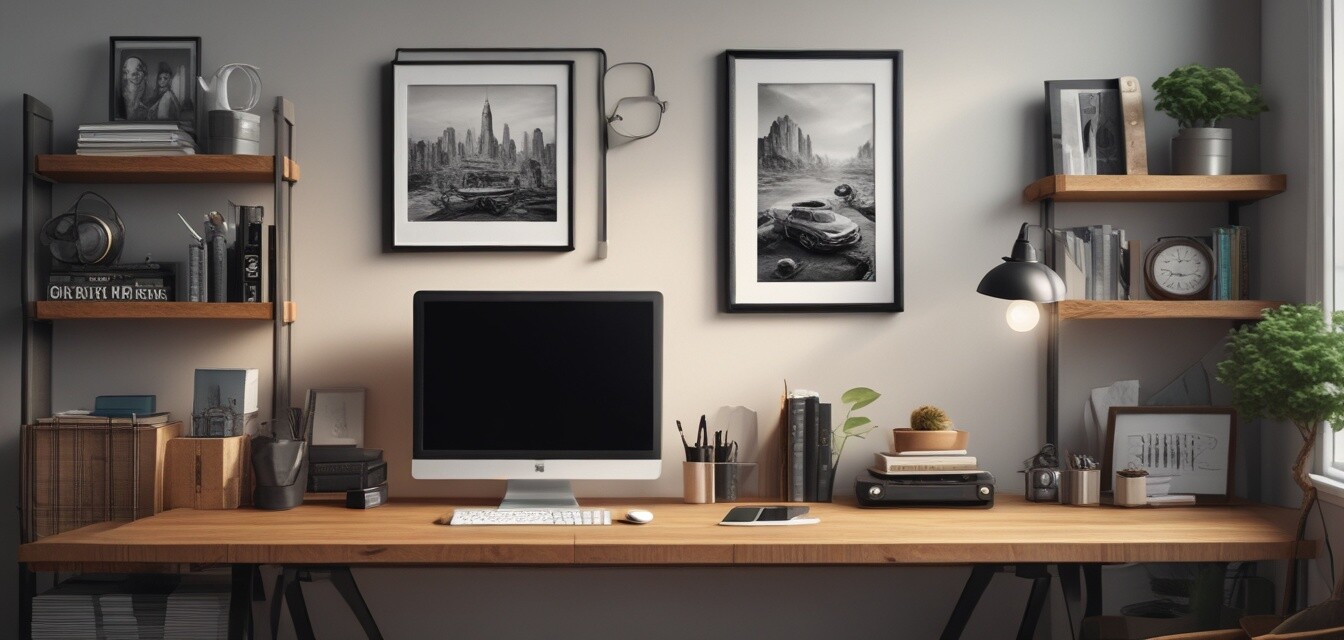
Organizing your home office: Strategies for success
Key Takeaways
- Efficient organization boosts productivity in your home office.
- Utilize proper storage solutions to reduce clutter.
- Incorporate ergonomic furniture for comfort.
- Adopt a minimalistic approach to improve focus.
- Make use of technology to optimize your workspace.
Creating an organized home office is essential for improving efficiency and streamlining your workflow. Whether you’re working from home full-time or just occasionally handling a project, having a structured workspace can lead you to achieve more in less time. Here, we’ll explore effective strategies for organizing your home office in a way that enhances productivity while maintaining a pleasant atmosphere.
1. Assess your space
Before diving into organization strategies, take a moment to evaluate your current workspace. Assess how much space you have, the layout, and what elements you already have in place. Here are the key aspects to evaluate:
- Desk space: Is it big enough for your needs?
- Lighting: Is your workspace well-lit?
- Accessibility: Are frequently used items within easy reach?
2. Declutter your desk
Decluttering your desk is a vital first step in organizing your home office. Here’s how you can do it effectively:
- Remove everything from your desk.
- Only place essential items back on the desk.
- Use storage boxes for items you don't need daily.
- Discard items that are no longer useful or relevant.
3. Utilize storage solutions
Once you've decluttered, it’s time to implement effective storage solutions. Here’s how:
| Type of storage | Benefits |
|---|---|
| Drawer organizers | Keep small items sorted and easy to find. |
| Shelves | Maximize vertical space for books and decor. |
| Filing cabinets | Store important documents securely. |
| Wall-mounted storage | Free up desk space and keep supplies visible. |
4. Focus on ergonomics
Your comfort plays a significant role in your productivity. Incorporating ergonomic furniture into your setup helps maintain proper posture and reduces strain. Here are some ergonomic staples to consider:
- Adjustable chairs
- Standing desks
- Monitor stands
- Keyboard trays
5. Create zones for different tasks
Segmenting your workspace into zones can help create a more organized environment. Consider the following zones:
- Work zone: Your primary workspace for computer tasks.
- Storage zone: Where you keep supplies and documents.
- Inspirational zone: Decorate with motivating images and quotes.
6. Embrace technology
In the modern age, technology can greatly enhance organization. Utilizing tools such as wireless networking solutions can minimize cord clutter and improve accessibility. Consider employing:
- Wireless chargers
- Cable management solutions
- Digital organizers for scheduling and tasks
7. Incorporate a minimalistic approach
Less is more when it comes to organization and design. A minimalistic approach allows for better focus and reduces distractions. Follow these tips to achieve a minimalist workspace:
- Limit the number of decorative items.
- Choose a simple color scheme for your office.
- Opt for multifunctional furniture.
8. Personalize your space
Finally, it’s important to personalize your workspace to make it feel truly yours. Add elements that inspire and motivate you. Consider:
- Artwork or prints on the walls
- Plants for a touch of nature
- Personal mementos that hold meaning
Conclusion
Organizing your home office is a crucial step in creating a productive work environment. By implementing these strategies, you can enhance your focus, minimize distractions, and ultimately improve your work performance. Remember that an organized workspace not only boosts productivity but also contributes to a positive mindset. For more tips on creating an effective home office setup, check out our Setup Inspiration section, where we showcase various ideas to elevate your workspace.
Pros
- Improves efficiency and productivity.
- Creates a pleasant and inviting work environment.
- Reduces stress and distractions.
Cons
- Can require initial time investment to set up.
- May need to purchase storage solutions or furniture.